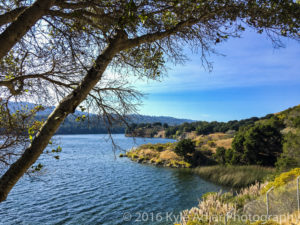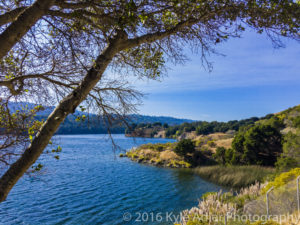One of the most important elements of an image is focus, and even an untrained viewer can tell immediately when a key part of the image is not in sharp focus. The stakes are even higher when we consider that poor focus is nearly impossible to correct in post-processing. Most of us rely on our camera’s autofocus functionality to help us achieve tack-sharp focus while shooting, but as with every other automated system in a camera, even very sophisticated autofocus mechanisms can go awry, especially when we’re faced with tricky shooting situations. Here’s a quick guide to minimizing focus problems and achieving sharp focus in nearly every shot.
 Scenes with low contrast, such as in this image of ice floes on the Barents Sea in Svalbard after sunset, can fool even sophisticated autofocus systems. Override your camera’s autofocus system and instead shoot manually in these conditions. Buy this photo
Scenes with low contrast, such as in this image of ice floes on the Barents Sea in Svalbard after sunset, can fool even sophisticated autofocus systems. Override your camera’s autofocus system and instead shoot manually in these conditions. Buy this photo
- Make sure to select the part of your image that you want to be in sharp focus. It sounds like a no-brainer, but surprisingly frequently the reason an image’s main subject is not in focus is because the photographer never told the camera’s autofocus system what to focus on. Remember that as with any assistive technology, a camera’s autofocus system is just a collection of hardware and software designed to make a best guess about what the user wants. If you leave your camera set to full autofocus mode, it does its best to identify what its software determines is likely to be your intended subject. A human face, for example, is likely to be what you want to have in sharp focus, so the camera focuses on that. But often the camera does not guess correctly. Nearly every camera, including the one in your smartphone, allows you to manually select your desired focus point, often by simply touching the desired part of the image on the screen. Be sure to check what your camera is doing and correct it by manually selecting the focus point if it guesses wrong.
- Recognize that your camera’s autofocus system will likely not work in certain tricky conditions. Most autofocus systems work by looking for areas of the image where the contrast is changing, such as at the outlines of a person or a building. But in very dim lighting, or when the main subject is badly backlit, or in scenes with very low contrast (think of a stormy sky or the waves of an ocean), the autofocus does not work. Recognize these deficiencies and be prepared when shooting in these conditions to take manual control. Every camera has a mechanism to manually select focus, and you need to know how to use that feature.
- Choose the autofocus method best suited to your shooting needs. Most advanced or professional cameras allow you to choose among several different types of autofocus methods. Often, the first choice is between single-focus mode or continuous-focus mode. Choose single-focus mode when your subject is relatively stationary and you must have precise focus achieved before releasing the shutter. For subjects that are moving quickly or where you need to time your shot exactly, even at the expense of not yet having perfect focus, you should choose continuous-focus mode. Within each of these modes, your camera may offer sub-choices, such as letting you manually choose the exact focus point you want or choosing a range of points from which the camera selects focus based on the motion of the subject. This is rocket-science technology, but fortunately it is pretty straightforward to choose the desired method once you understand what each one does. Read your camera’s manual and always practice in the different focus modes before going on any important shoots, especially on a major trip.
- Circumvent the whole problem by choosing a wide depth of field. Sometimes the best artistic choice requires a narrow depth of field so that only the main subject is in sharp focus, and sometimes the light is too dim to choose a narrow aperture, but if you can make the shot work with a wide depth of field (in other words, using a small aperture, represented by a high f-stop number), then you don’t have to worry about focus at all. In most situations, universal focus from several feet away from your lens through infinity is achieved at apertures of about f/16 or smaller.
 Capturing tack-sharp images of fast-moving wildlife like the cheetah requires selection of an autofocus mode capable of dynamically refocusing on the moving subject. For this shot of a cheetah in Serengeti National Park in Tanzania, there was the added challenge of having low contrast between the animal and the background. I chose my camera’s continuous-focus mode with predictive focus so the camera would anticipate where the cheetah was moving and focus ahead of the shutter. Buy this photo
Capturing tack-sharp images of fast-moving wildlife like the cheetah requires selection of an autofocus mode capable of dynamically refocusing on the moving subject. For this shot of a cheetah in Serengeti National Park in Tanzania, there was the added challenge of having low contrast between the animal and the background. I chose my camera’s continuous-focus mode with predictive focus so the camera would anticipate where the cheetah was moving and focus ahead of the shutter. Buy this photo
By using these tips, you can achieve tack-sharp focus where you want it in nearly all of your images, whether you’re shooting with a simple point-and-shoot or phone camera, or the most advanced professional camera. Any camera frequently makes the wrong guess about where the focus point should be, so do not rely blindly on autofocus. It’s worth investing some time to learn how to configure autofocus appropriately for any shooting situation, and how to turn it off and instead focus manually when required. Happy shooting!
How do you achieve sharp focus in tricky conditions? Please share your thoughts in the comment box at the end of this post.
Want to see more articles about techniques? Find them all here: http://www.to-travel-hopefully.com/category/techniques/.


 Prof. Jay Pasachoff and his student set up scientific gear for observing the total solar eclipse in Svalbard in 2015.
Prof. Jay Pasachoff and his student set up scientific gear for observing the total solar eclipse in Svalbard in 2015. 
 This image shows the early partial stages of the Svalbard total solar eclipse. Shoot periodically during all the partial stages, and remember to reposition your shooting angle so the sun remains in the center of your field of view.
This image shows the early partial stages of the Svalbard total solar eclipse. Shoot periodically during all the partial stages, and remember to reposition your shooting angle so the sun remains in the center of your field of view. 

 Once home from the eclipse trip, get creative about how to share your experience. Here I have put together a montage of some of my favorite images from each stage of the Svalbard eclipse. Using Photoshop, I created a composite image showing the sequence of stages from partial to total and back again.
Once home from the eclipse trip, get creative about how to share your experience. Here I have put together a montage of some of my favorite images from each stage of the Svalbard eclipse. Using Photoshop, I created a composite image showing the sequence of stages from partial to total and back again. 

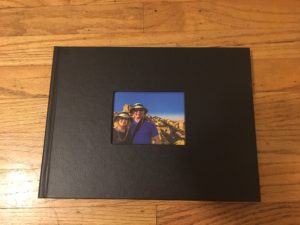
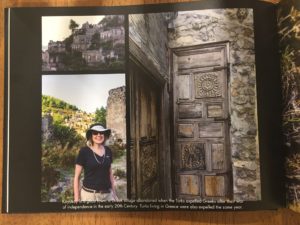
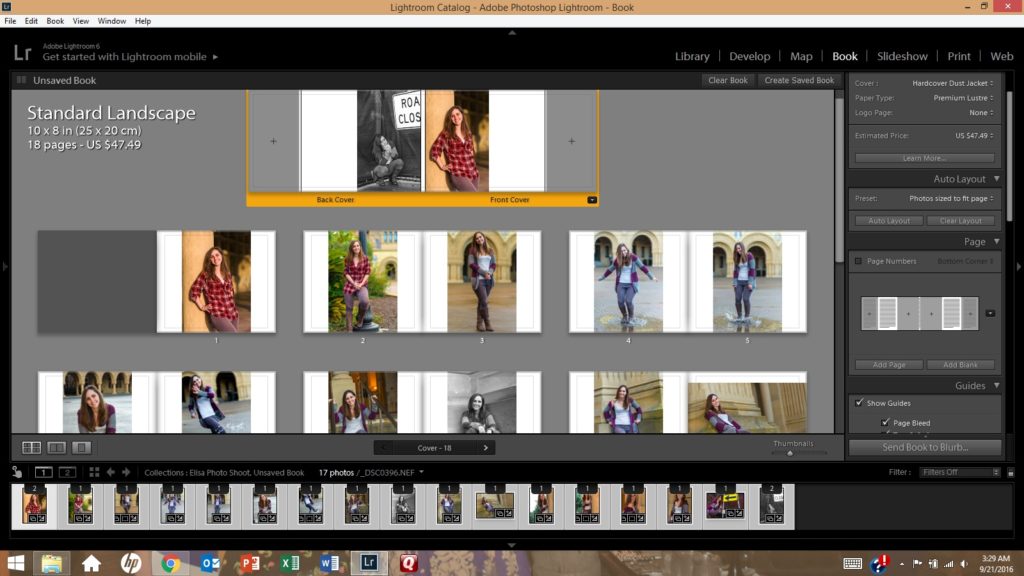 The process of creating a photo book using Lightroom’s Book module (shown here) is fairly straightforward. It’s even more intuitive using an online service such as Snapfish or Shutterfly.
The process of creating a photo book using Lightroom’s Book module (shown here) is fairly straightforward. It’s even more intuitive using an online service such as Snapfish or Shutterfly.
